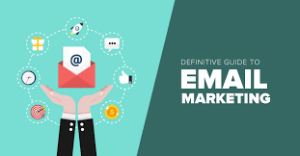
Email Marketing
Email Marketing
Email marketing is a digital marketing strategy that involves sending commercial messages or promotional content to a group of individuals via email. It is an effective way for businesses to reach out to their target audience, build relationships, and promote their products or services. Here are some key aspects and best practices of email marketing:
Building an email list:
Segmenting your audience:
Creating compelling content:
Writing effective subject lines:
Designing visually appealing emails:
 their emails on smartphones or tablets
their emails on smartphones or tablets.
Including clear call-to-action (CTA):
A/B testing:
Personalization and automation:
Monitoring and analyzing results:
Complying with regulations:
Remember, effective email marketing requires a balance between promotional content and providing value to your subscribers. By delivering relevant and engaging content, personalizing your messages, and continuously optimizing your strategy, you can harness the power of email marketing to connect with your audience and achieve your marketing goals.